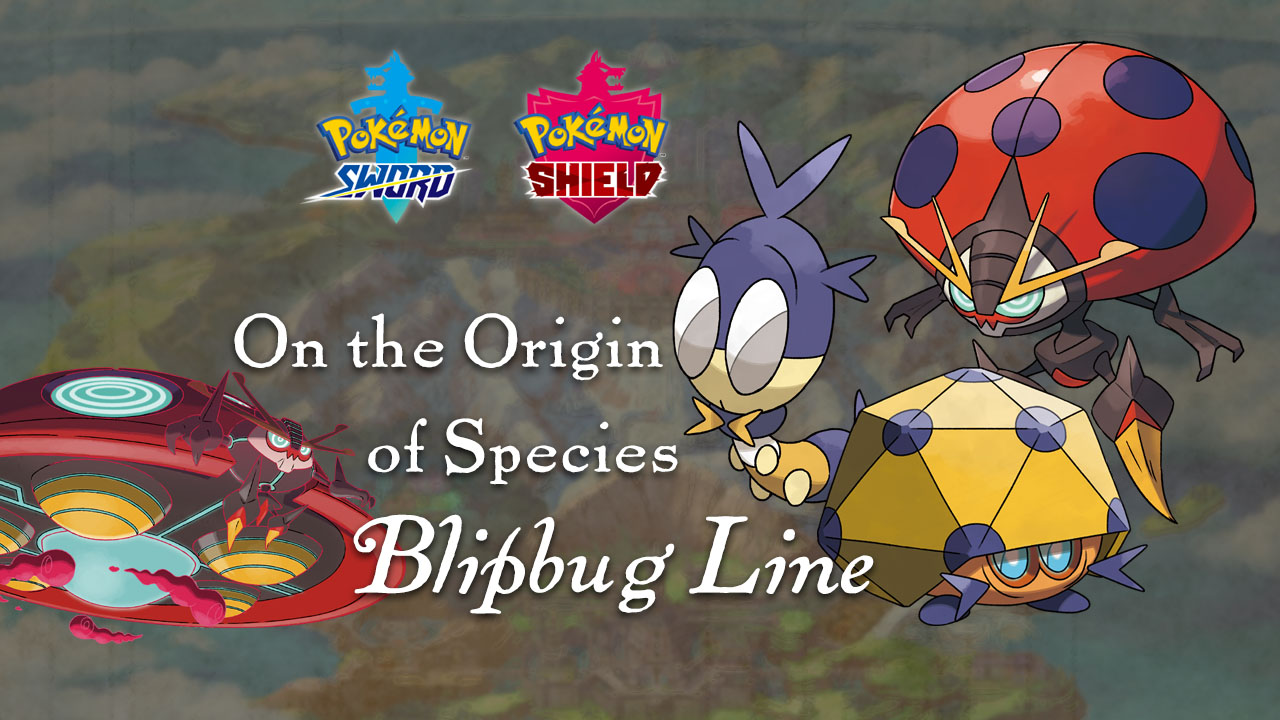In this recurring series, I’ll analyze the origins of Pokémon designs, their culture, and their historical allusions to British culture.
Today we’ll be studying the early bug line that you will encounter early in the game. Its origins may seem generic, but it has a great deal of relation to British history.
Blipbug
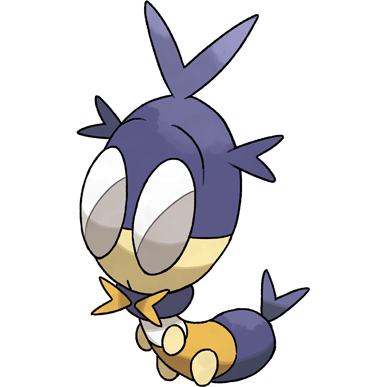
Blipbug, whose name seems to be a mix of a radar ‘blip’ and ‘bug’, looks like a typical worm. It is based on the larva of the ladybug. In fact, photos of larva (below) show the same dark coloration an yellow stripes.
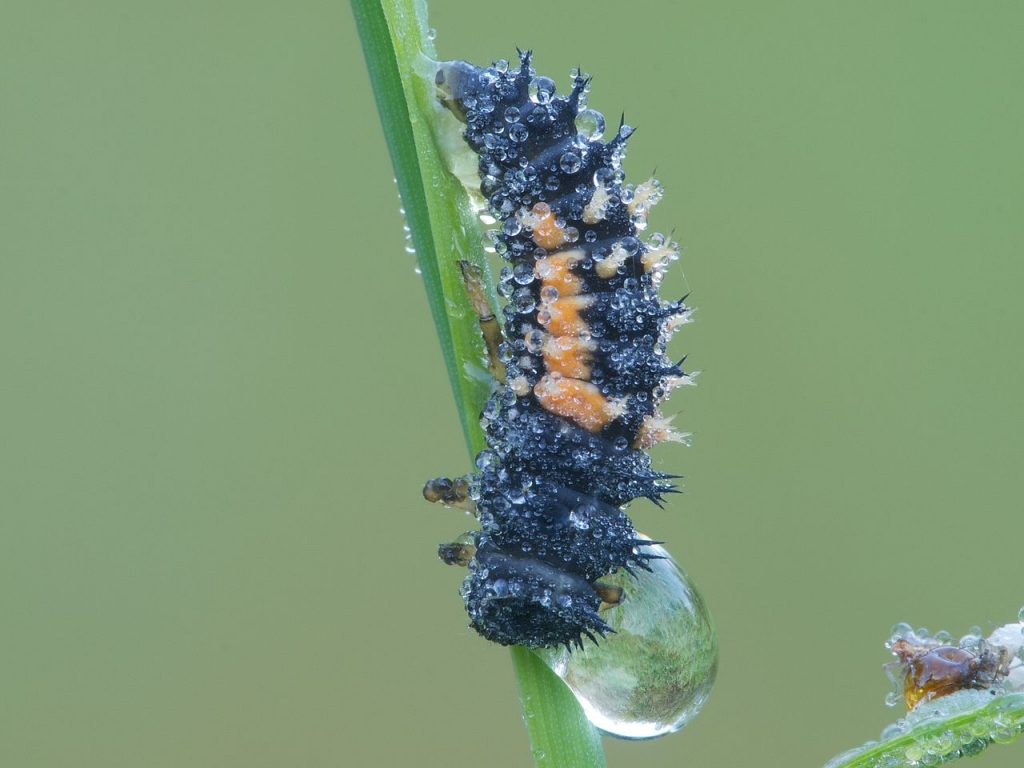
Ladybugs are known as ladybirds in England and are also known as lady beetles. The name is derived from Christian faith, where the ‘Lady’ referred to Mary due to the beetle’s color matching the red cloak worn by Mary in paintings. The black dots on its back, typically seven, also has religious allusions.
Blipbug is not just a stereotypical ladybug larvae. It has large eyes that seems to reflect light, and it seems to have something resembling a bowtie around its neck. Blipbug is a representation of a bookworm, a pejorative for someone who reads books frequently. In this case, its representation is also literal.
It is a phrase that started in Britain during the Elizabethan era. ‘Worm’ was used to mean ‘wretch’, and the prefix of ‘book’ was used for people who appeared to be deeply immersed in reading without care for others.
The bowtie, invented by Crotians during the Thirty Year’s War, has become a symbol for intelligence by the wearer. It, along with the large glass-like eyes, suggest it is a scholarly Pokémon. This is reflected in its Pokédex entries:
A constant collector of information, this Pokémon is very smart. Very strong is what it isn’t.
Often found in gardens, this Pokémon has hairs on its body that it uses to assess its surroundings.
Dottler
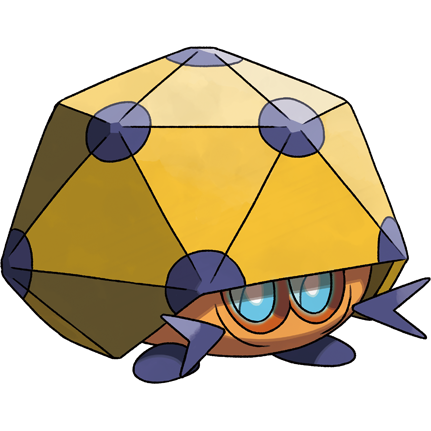
Blipbug evolves into Dottler, the pupal stage of the species. As a pupa it is slow-moving and hardening its body. As it gets closer to an adult beetle, its spots have started forming around its body. These don’t appear to just be ordinary dots, as they seem to have some relation to radar. Its name refers to a Doppler radar, a style of radar which uses radio frequency differentials to determine the speed of objects.
It barely moves, but it’s still alive. Hiding in its shell without food or water seems to have awakened its psychic powers.
As it grows inside its shell, it uses its psychic abilities to monitor the outside world and prepare for evolution.
Dottler appears to use its radar system in order to monitor its environment, which in the Pokédex seems to be a psychic ability to observe the world using extrasensory information. This reflects its Psychic typing.
Orbeetle
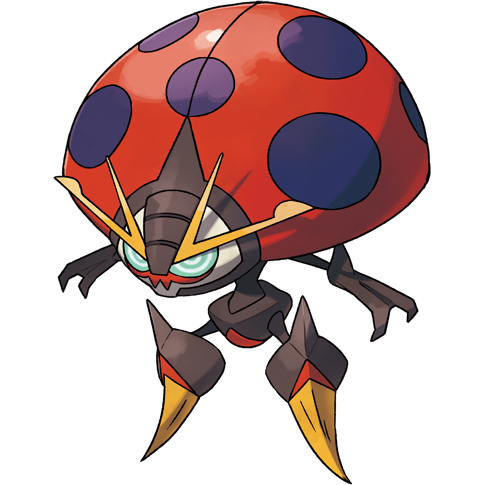
Orbeetle is the final evolution, finally arriving at its adult stage. Its classification is the ‘Seven Spot’ Pokémon, referring to the seven dark spots on its otherwise red body and referring to its name origins. Its name is a combination of “orbit” and “beetle”.
On its face are four sharp antenna, alluding to ladybug antenna and radar antenna. Under its eyes is a red mark that resembles a mustache. In some ways it is designed to be a mad scientist, an intelligent character who uses their intellect for evil or chaotic purposes.
Its shape is markedly different than a typical beetle, with its head combining all three parts of a typical insect: the head, thorax and abdomen. Instead of housing the Pokémon’s internal organs, it seems to be dedicated to housing its enormous brain.
It’s famous for its high level of intelligence, and the large size of its brain is proof that it also possesses immense psychic power.
It emits psychic energy to observe and study what’s around it—and what’s around it can include things over six miles away.
Again the Pokédex suggests that it uses psychic energy to mimic radar and observe the world around it.
In actuality, radar is a an acronym for RAdio Detection And Ranging that uses radio waves to visualize objects that wouldn’t be visible. As radio waves at different frequencies are able to penetrate different barriers that visible light cannot. A radar system will send out a radio wave. Then the wave will reflect off targets and be measured by the radar as it returned.

The technology was developed by many countries around the time of World War I. Sir Robert Wattson-Watt was a Scottish scientist who started tracking thunderstorms by detecting radio waves from the storm. This was useful during the war as a way to warn pilots.
As the technology developed, it became an essential technology during World War II. It was used by the Royal Air Force during the Battle of Britain to detect the position of enemy aircraft among other battles.
In the decades following World War II, during the Cold War, the US and Britain were highly interested in learning about operations occurring in the Soviet Union. Espionage was important, as well as not being caught. Airplanes could fly over and take photos, but could be spotted by radar.
As the industry of stealth aircraft developed, one its main purposes was to absorb radar signals or otherwise be designed to minimize the strength of the returning signal. This could be done with different materials or shape.
Due to the national secrecy of this technology, much of it has been kept classified by governments and military contractors. Most citizens within the country are not going to know what kind of aircraft are being designed. However, in order to test and use these planes, they have to be flown.
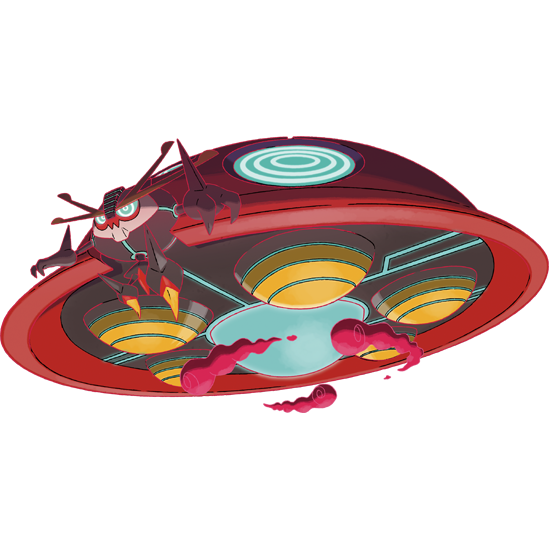
Orbeetle’s Gigantamax form takes inspiration from a stereotypical unidentified flying object (UFO). Its big brain has reached its maximum size as it serves as the entire saucer.
UFOs have been cited occasionally through history, but many reports have been made in the UK since the 1950s. Often it’s just a few lights glowing in the sky. Sometimes the reports go further, with the witnesses talking to the alien pilots and being probed.
Reports continued in following decades in other countries. In Belgium there were a large number of sightings in late 1989 and early 1990. Sometimes an object would appear on radar but soon vanish. Despite the number of reports, governments never have produced great explanations.
The Falkirk Triange, in Scotland, is considered the place in the world that gets the most UFO sightings. It centers around the small village of Bonnybridge.
The UFO sightings could be explained by classified stealth aircraft conducting tests or performing espionage. The sightings, around the US Air Force base Area 51 and the UK Royal Force Base in Kirknewton, may be doing everything they can to avoid radar and detection. Ironically, now they are being seen using visible light.
It’s also possible the UFO sightings are real. Crop circles have appeared at night throughout the UK. Aliens may land their saucers in crop fields, leaving circular impacts.
Its brain has grown to a gargantuan size, as has the rest of its body. This Pokémon’s intellect and psychic abilities are overpowering.
If it were to utilize every last bit of its power, it could control the minds of every living being in its vicinity.
The Pokédex entries for Gigantamax Orbeetle suggest a paranormal force that could efficiently take over the world, relating back to its mad scientist persona. It also goes from a terrestrial bug tracking the world, to a spacecraft-like being that would be tracked with radar.
Conclusion
The Blipbug line serves its role as an early bug-type Pokémon you can catch, but is also much more. It also shows the evolution of radar systems in the UK, starting from a scholar researching radio waves to large monolithic radars to stealth aircraft designed solely around avoiding radio waves.
While the truth around UFOs are unknown, they certainly appear frequently throughout the UK and crop circles have become a popular symbol alluding to aliens and mysterious forces. This Pokémon line captures both the science and mystique of the technology and related phenomenon.

